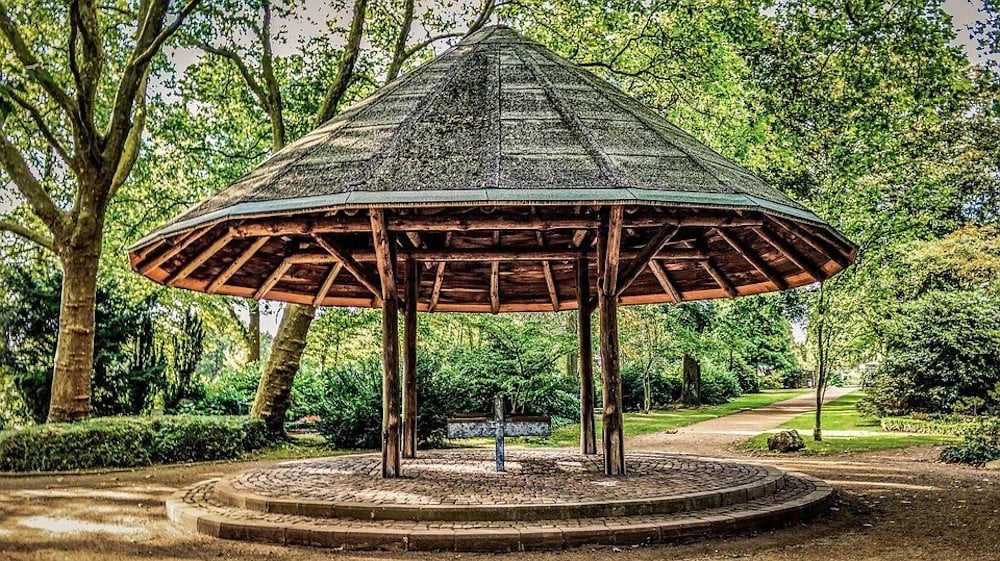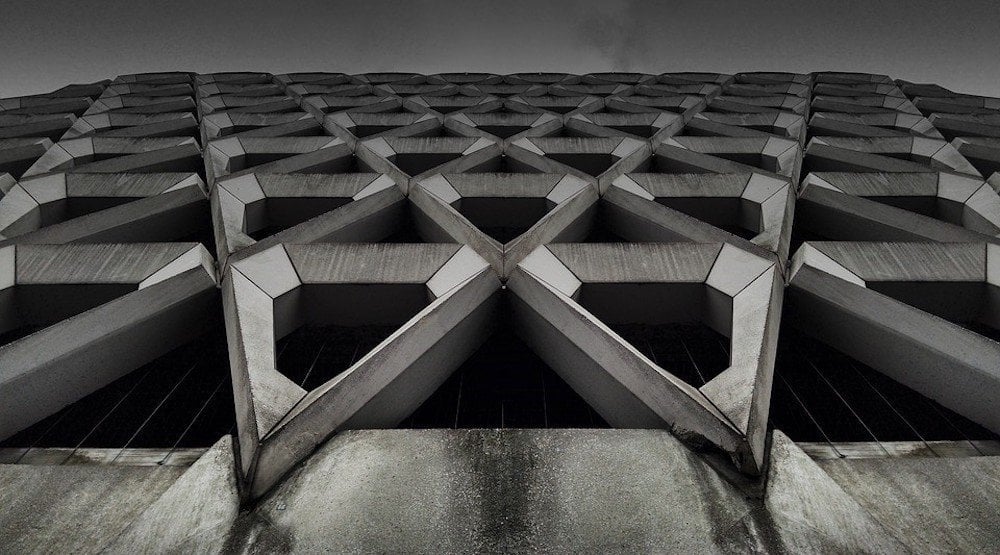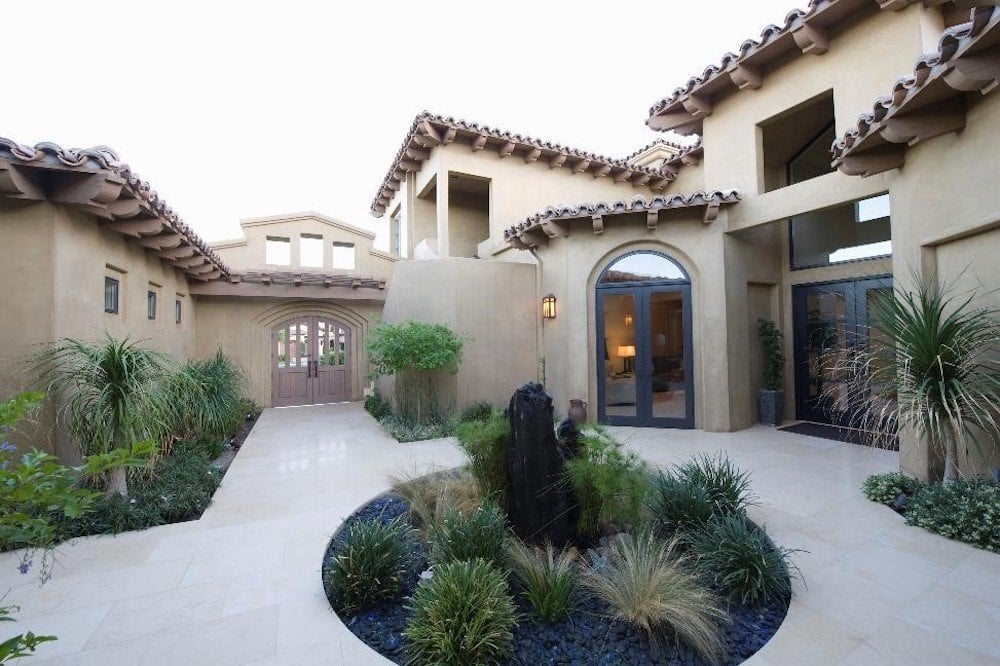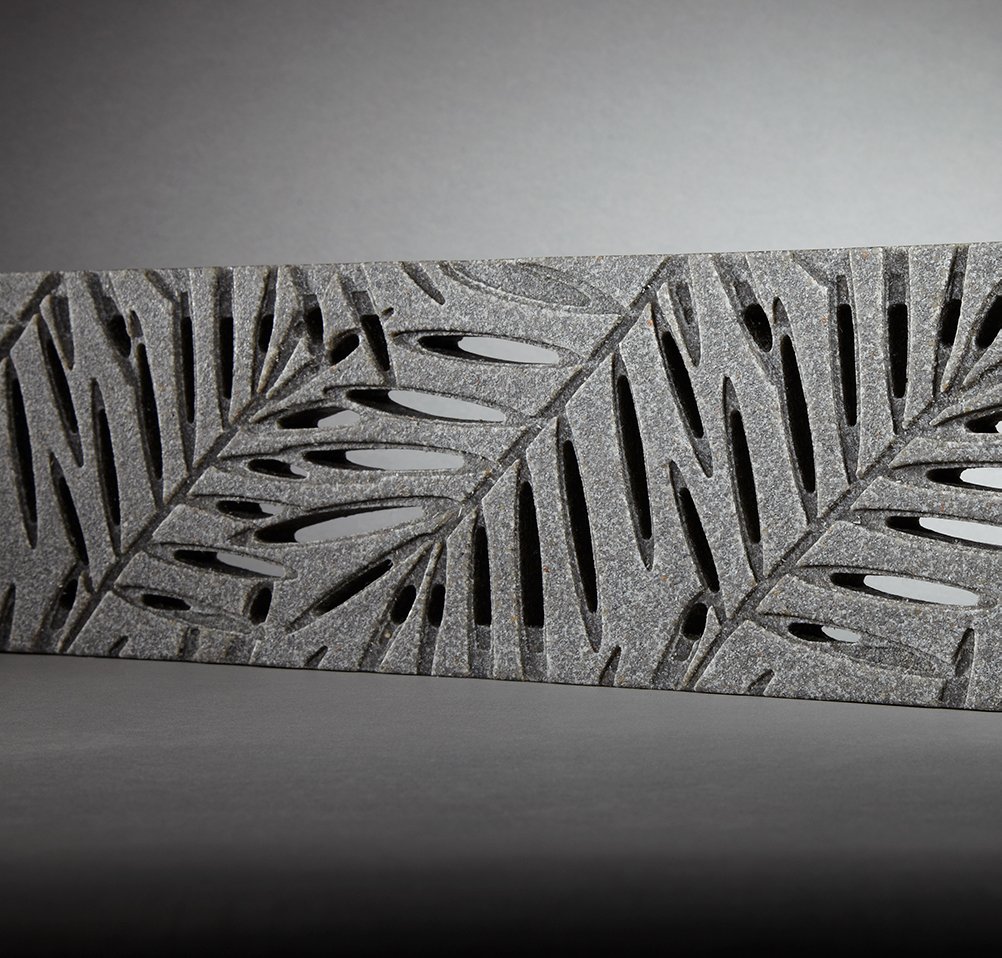With increasing urbanisation all over the world, greenery and landscaping has become all the more important in city planning. It’s not just happening from an urban standpoint, but many homeowners also prize a beautiful garden or yard. In the perfect yard, soft landscaping in the form of flora and fauna will not look complete without the right hardscape design.
Building a home, or any infrastructure for that matter should have a hardscape design that is also known as the “backbone”. It is a part of your planting plan that should be taken with deep brainstorming on how you will incorporate the hardscape materials on your home. Hardscaping is considered to be a top aspect of the landscape design process because it allows for the creation of spaces that serve a purpose and are still pleasing to the eye. In today’s house plan, it is common to see a lot of hardscape materials like wood, concrete, brick, tile or stone. The gardens will lack structure without the unification of hardscape design.
One may also see the hardscape designs as an adhesive as it connects the outdoor gardens and the clean living space inside. These hardscaping ideas include paths, patios, walls, wood structures and walkways. They bring out the beauty of the space while maintaining functionality. The best part of hardscape design is that you can use any materials guaranteed for hardscaping as long as they fit your housing plan. Integration of these elements gives off a harmonious vibe to the surroundings. Hardscaping design should have longevity and a sense of permanence. More so, hardscaping is the use of hard landscaping materials for building you landscape.
Hardscape materials have so many benefits that you cannot simply neglect it in your house plan. These are some reasons why hardscape design is so important:
1. Prevent flooding and sinkholes
Hardscape materials can be a catch basin for water when it rains. At the end of landscape features such as lawns, patios, driveways and etc. There is a drainage point built with an underground drain pipe. They help in stopping a flood from ruining your landscape.
2. Prevent soil erosion
One of the best things a hardscape material can do is to prevent soil erosion. These materials can modulate and keep the soil intact on your home landscape. You don’t have to think about buying additional soil just to make an elevation. By placing barriers in the form of stone or concrete where erosion is likely, you can keep your ground intact for years to come.
3. Prevent water infiltration
Hardscape design can prevent water infiltration that can lead to foundation cracking problems. These materials are the outer layer of the infrastructure or home which is the first to have the splash from a drain pour. As it is a hard surface, it cannot be penetrated easily. Thus, no infiltration is likely to happen.
4. Allow large amounts of human traffic without breaking
Besides preventing flood and soil erosion, hardscape design can lead to a better landscape for your home because it can increase functional walking and activity areas. This increased accessibility means that anyone can enjoy the outdoor spaces. What’s more, even though there is a large amount of human traffic, the soil or your garden will not tear down.
5. Beautiful yet functional permanent fixtures
Decks and gazebos increase activity spaces and can create a beautiful and tranquil sanctuary in your garden. Retaining walls are especially important in sloped areas, as it can prevent damage in times of heavy rainfall. The right hardscape fixture can also support creative landscaping that might not be possible without hardscapes.
Now that you know what the benefits of a hardscape design are, you should also be aware of the top 5 hardscape design materials.
Wood
 A hut made from raw wood lumber
A hut made from raw wood lumberThis is the most popular choice of materials due to its rustic look and warm garden feel. Hardscaping ideas allow you explore both aesthetic and functionality. Hardscaping ideas for wood are endless as this can be incorporated with patios, gazebos, trellises and even walkways. Another great thing about wood is that it does not conduct heat and stays cooler under the sun compared to other materials. On the other hand, it requires more maintenance and the pricing varies greatly depending on its kind and polish. Wood can usually be used in fences, railings and in the structure of garden gazebos. It is not suitable for use as outdoor flooring, as it could warp after prolonged periods of water absorption, can be susceptible to termites and may discolour easily after being exposed to the elements.
Concrete
 A wall covered with patterned concrete triangles
A wall covered with patterned concrete trianglesIf you’re going for a modern industrial look then concrete is a good choice for you. It is durable and affordable at the same time which makes it the first choice among many home builders. Concrete is the cheapest hardscape material, which is why it is one of the most common materials used in construction. This versatile material can be moulded to conform to any surface shape which is a good point for design specifications with limited budget resources. Furthermore, it is not weakened by mould, pests or moisture. The downside to using concrete is that it absorbs and retains heat rapidly, which may cause the ambient surroundings to be warmer than usual. Concrete is most commonly used in pavements, driveways and building claddings.
Brick

A neat and classic look, the brick hardscape material is great for your next social media photo background as it gives off a sophisticated vibe. On the more mature side, the brick instantly lights up your landscape because of its ability to retain colour and durability. It is a very flexible material in hardscape design, as it can be reused and reset into new configurations. In addition, a brick hardscape design has a characteristic of wear and tear from weather erosion due to the brick’s softer properties. This lends a rustic charm to your design, and can be used in walls or pavements.
Tile
 White tiles decorating a small courtyard
White tiles decorating a small courtyardJust like concrete, tiles are a common hardscape material used by many designers. It can be made of different types such as porcelain, ceramic, terracota, quarry and mosaic. What is great about tile is that it is low maintenance and stain resistant. If you also want something that is highly durable and versatile, tiles would be your go-to choice. A downside is that some tiles, such as glazed tiles, can get slippery when wet. It is also more limited in its ability to drain water efficiently compared to some of the other materials listed here. Use tiles for wide walkways. Some creative designers have used elaborate tiles as a feature wall cladding to add a visual focal point in their hardscape designs.
Stone
 Jonite Trench Grate Nature collection
Jonite Trench Grate Nature collectionThe last but definitely not the least hardscape material is stone. Stones have been used for homes as far as the Stone Age and are most prominently featured in architecture in ancient Rome and castles in England. Stone is incredibly weather resistant, which makes it one of the most durable materials in hardscape design. What is also astonishing about stones is its natural water resistance and natural anti-slip properties which is perfectly suited for pools and water features. You may need more labour during the installation phase, but the work is well worth it as it requires minimal maintenance work in the future. Furthermore, with advancements in technology, you can find stone reinforced products such as panels and gratings, which are so strong you can use them in a variety of applications.
Deciding on your design direction should inform your choices for hardscape design materials. Many designers mix and match all these materials to fulfil their visions of transformational spaces. Don’t be constrained by what you see on the market, as there are materials suppliers that would be able to work with you to create custom solutions at surprisingly affordable budgets.










